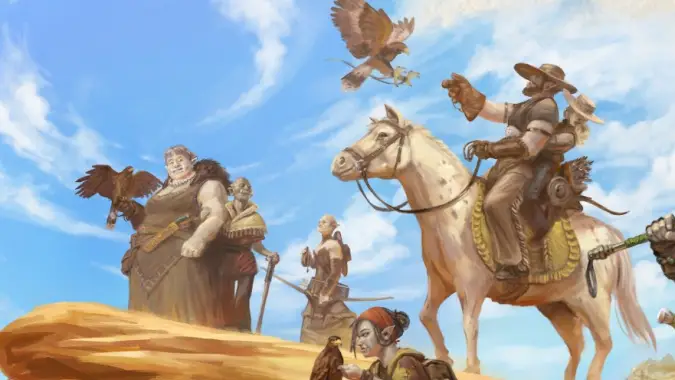What’s new about D&D 2024’s character creation

While making your first character in Dungeons and Dragons can take a bit of time, over time it gets a lot faster once you’re familiar with it — possibly with the biggest slowdown being figuring out how to translate the concept in your head into a D&D character mechanically. However, the 2024 revamp of D&D brings with it a few changes that might bring any player a moment’s pause, but almost all of them either focus on mechanical balancing, roleplaying, or continuing changes that we’ve already seen in existing product between the initial launch of 5th Edition and now. This isn’t going to cover the full spectrum of what has changed for every single class (that’s way beyond the scope of this!), but rather a broader look at three big mechanical differences between the old edition and its 2024 remake.
One of these changes is more wording than anything — the word ‘race’ continues to be eliminated when referring to fantasy beings like elves, dwarves, tieflings, and dragonborn. Instead, the game now calls it what it is: in D&D 2024 these are now your species. Half-species are also gone, with the game opting to bring things like full-blooded orcs into the game as player species. Fear not though, half-elf and half-orc fans: simplified rules enable creating a combination of any two humanoid species; simply choose one of your character’s parents’ species to provide your game traits (movement speed, size, etc.), mix and match visual traits, then average the two species’ life span to figure out how long your character will live.
Backgrounds have been brought forward in the character creation process in importance — literally, as you now pick a background second, immediately after your class! Backgrounds have far more weight now when creating your character, as well. In addition to providing proficiencies, as they did in D&D 2014, or 5e, backgrounds now also give you a free feat. The free first level feat is a very popular house rule at many tables, and Wizards of the Coast showed signs of adopting this by including it with character-specific backgrounds in products like Dragonlance and Bigby Presents: Glory of the Giants, so it’s fantastic to see it becoming official. However, your background also determines your ability score bonuses, rather than your species; each background offers three options, and you choose whether to put +2 in one stat, +1 in a second, and +0 in the third; or +1 in all three options. The example given by Jeremy Crawford in a preview video is the Acolyte: the Acolyte’s three abilities you can modify are Intelligence, Wisdom, and Charisma — but it’s up to you to decide which ones get what bonuses.
Finally, the biggest change from first level is your subclass — or rather, lack thereof. All classes now get their subclass at level 3, rather than some being at level 1, some being at level 2, and some being at level 3. This will require some finagling to use subclasses from older products, but it does mean that it’s now predictable when your table can expect those bonuses — when the party hits level 3, everyone knows they’re getting a subclass and the newfound bonuses that go with it, rather than some people feeling like their characters are “half-done” while others are fully-baked from level 1.
Please consider supporting our Patreon!
Join the Discussion
Blizzard Watch is a safe space for all readers. By leaving comments on this site you agree to follow our commenting and community guidelines.
 @awaymessageclub
@awaymessageclub



